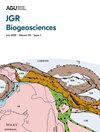Vegetation cover is crucial for ecosystem stability, responding sensitively to climate change and human activities, and is prone to irreversible degradation. However, the mechanisms driving vegetation variations due to natural and anthropogenic factors still need to be fully understood. This study focused on the Weihe River Basin to elucidate the response mechanism of vegetation cover change to climate change and human activities from 2001 to 2020. Long time-series multi-source data were combined with a pixel dichotomy model, Theil–Sen median trend analysis, and Mann-Kendall test to examine the trends and delineate five gradients in vegetation cover change. Additionally, Extreme Gradient Boosting, the Shapley value, and a structural equation model were employed to investigate the multidimensional response of vegetation cover in the basin as a whole and different vegetation cover gradients. The results revealed a general upward trend in vegetation coverage in the Weihe River Basin from 2001 to 2020. Topographic conditions and human activities were identified as primary influencers. Notably, accounting for climate change, particularly about changes in maximum climatic variables, was found to be essential, with temperature changes exerting a greater impact on vegetation cover variations compared to precipitation changes. The interaction between human activities, climate change, and topographic conditions can alter the intensity of each factor’s effect. The direction of indicators mentioned above varied across the vegetation cover gradients, emphasizing the need for localized strategies to improve vegetation. These findings offer valuable insights into ecological protection and vegetation restoration in the Weihe River Basin.


